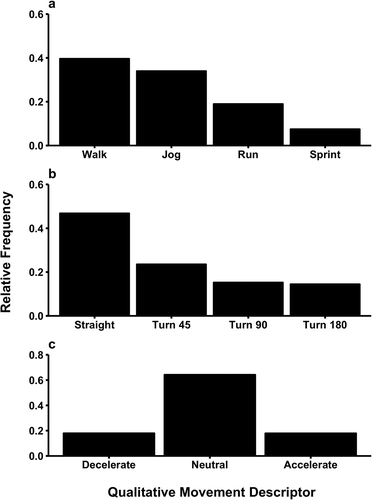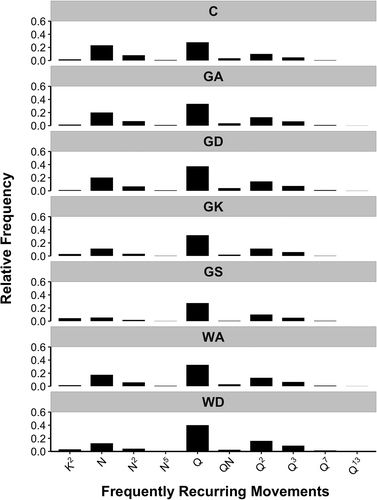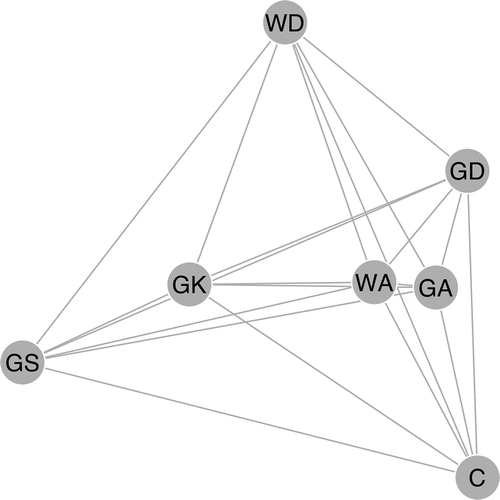Figures & data
Figure 1. The relative frequency of clustered observations for (a) velocity, (b) angular velocity and (c) acceleration movement features.

Table 1. Movement subunits, their percentage contribution to the wider data set and qualitative descriptor (this wider data set is inclusive of all players, matches and positions).
Table 2. The Minkowski distances for movement sequence distributions between netball playing positions including centre (C), goal attack (GA), goal defence (GD), goal keeper (GK), goal shooter (GS), wing attack (WA) and wing defence (WD).
Figure 2. The relative contribution of frequently recurring LCS sequences by netball playing position including centre (C), goal attack (GA), goal defence (GD), goal keeper (GK), goal shooter (GS), wing attack (WA) and wing defence (WD). The number of iterations of each movement subunit are represented by bN, for example K2 refers to KK and N5 refers to NNNNN.


